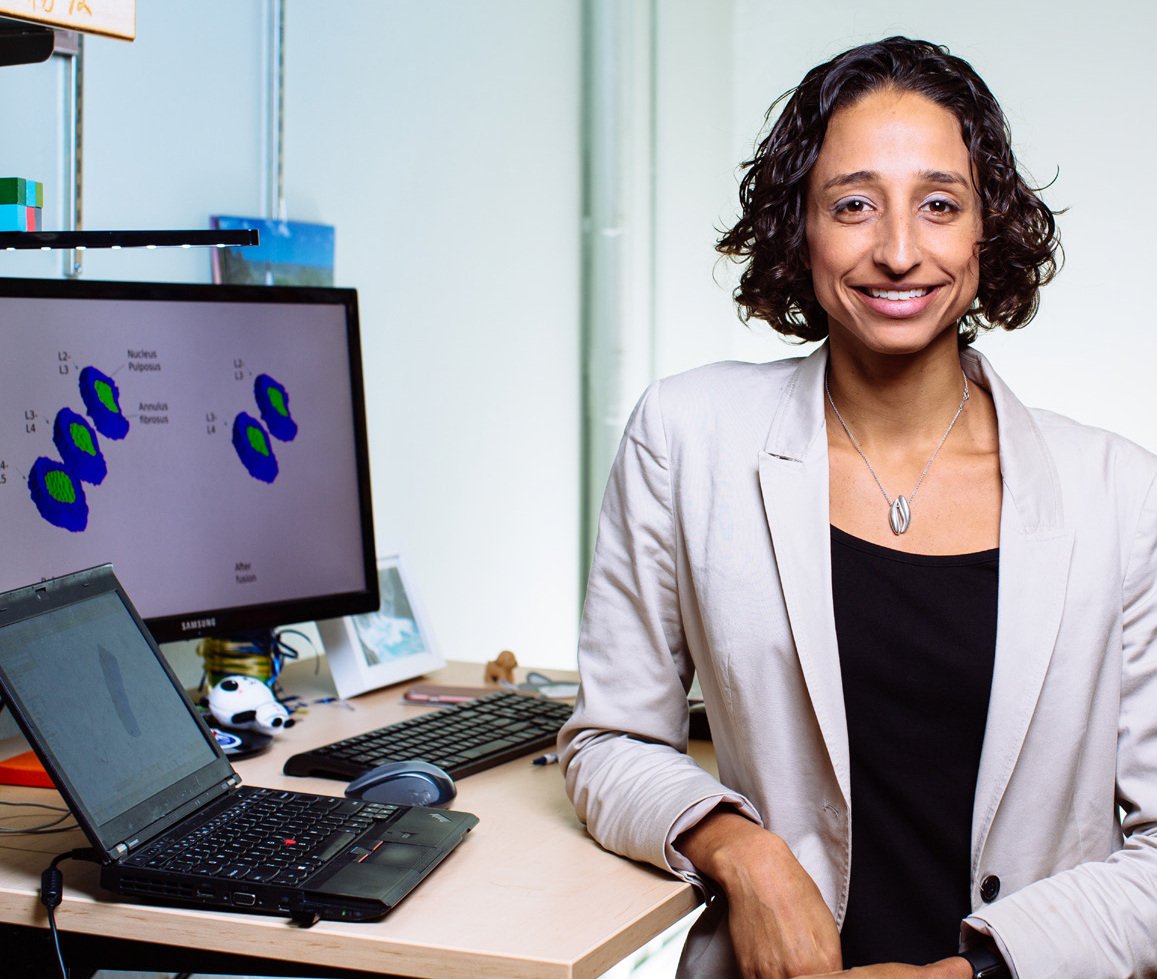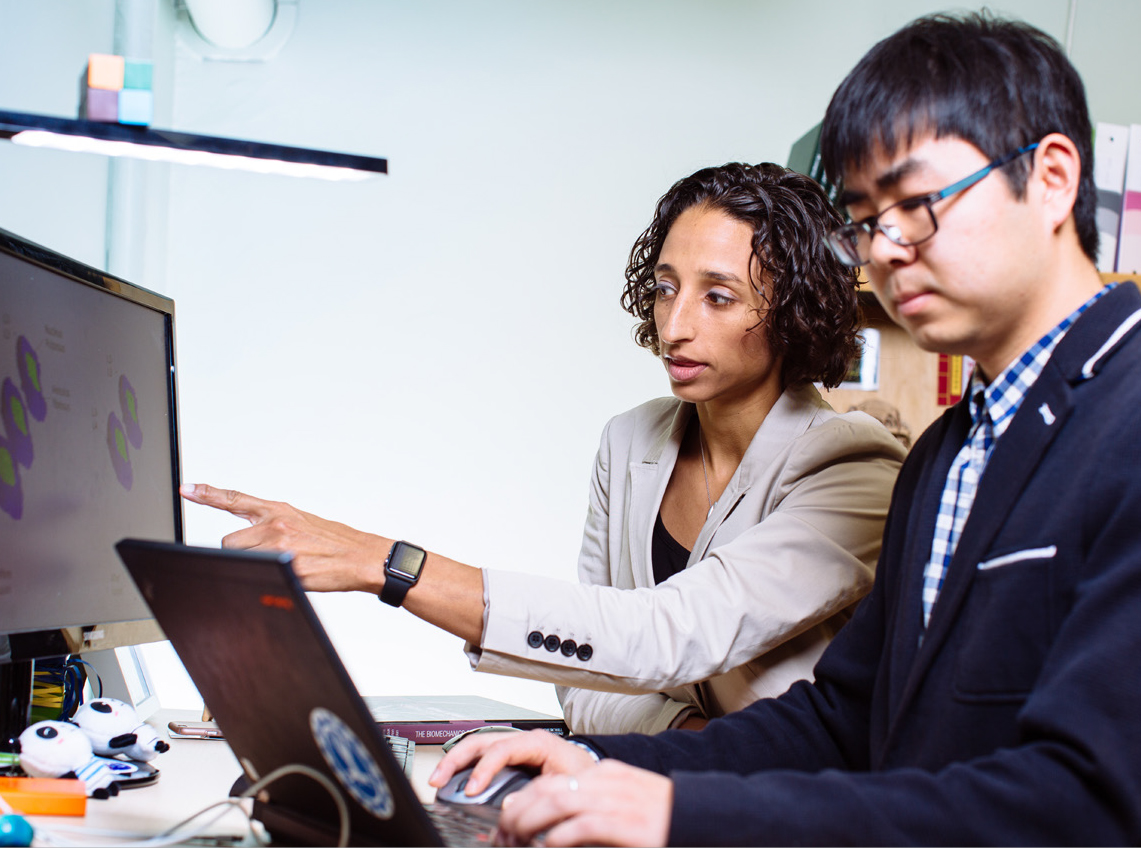Mechanical Engineering To Aid Back Surgery
Lower back pain is not as common as the common cold. But it’s close. About 80 percent of people suffer back pain sooner or later. If muscle relaxants, physical therapy, ergonomic adjustments or massage don’t help enough, some patients move on to steroid injections, nerve ablation or surgery.

Some half a million people a year in the U.S. have surgeries to treat the effects of disc degeneration, and others undergo less common surgical treatments. But a surprisingly high percentage of patients eventually need a second surgery to repair damage caused by the first. Estimates of second surgery rates run as high as 30 percent.
The cause is often physics. The vertebrae in the S-shaped lumbar spine work together to allow the back to bend and twist or support a heavy lift. Different vertebrae up and down the spine take on different amounts of stress depending on the movement, but they share the load.
Spinal fusion to treat disc degeneration changes the load distribution, particularly above the fused levels. Fusion eliminates the ability of the spine to bend in the space between fused vertebrae.
The immobility creates added mechanical stress to vertebral joints above and below. The stress can increase about 15 percent directly above and below a single fusion of two vertebrae. If three vertebrae are fused, the mechanical stress can rise to more than 50 percent. Increased stress means increased risk of fracture.
“Many factors affect the risk of fracture or adjacent disc degeneration following spine surgery — including osteoporosis and obesity,” says Grace O’Connell, assistant professor of mechanical engineering. “But increased mechanical stress is a major risk factor, and there is no systematic way to predict which patients are most vulnerable.”
The Signatures Innovation Fellows program supports research by O’Connell and graduate student Bo Yang to develop a model to help surgeons determine an individual patient’s added risk and the best surgical strategy to reduce the risk. Their model aims to predict increases in stresses in the adjacent disc following fusion by using a patient’s CT or MRI scans.

Earlier research with vertebrae from ox-tails obtained from butchers demonstrated the strategy’s predictive ability. They are now working with vertebrae from human cadavers to develop algorithms that can guide surgical planning.
Along with software engineer Nate Bartley, they are analyzing patient spine images and surgical results to strengthen the algorithm and allow surgeons to predict post-surgery fracture risk based on an individual patient’s spine alignment.
New research by others indicates that certain features in the S-curve of the spine may prove to be critical in assessing fracture risk.
“The spine has to balance the forces on the front and the back. And if it tilts in a weird way, bones are more likely to fracture in one direction or another,” O’Connell says.
“We’re concerned with the whole curve. This seems to be of most clinical importance.”
“Surgeons know the spine configuration changes risk, but they don’t have a systematic way of knowing how to optimize what they know,” Yang says.
“Many of them are frustrated because they can’t really tell to what degree a patient is at risk for bone fracture, even if they know that patient’s bone density,” says O’Connell.
O’Connell’s team interviewed surgeons to understand the variability in their surgical procedures and their assessments of the new modeling effort. UCSF orthopedic surgeons are encouraged by the research.
“We didn’t know we would get such strong support from them to pursue this,” O’Connell says.
O’Connell and Yang plan to reach out to a wider range of back surgeons, since they know that surgeons approach spine surgery in different ways. Ultimately, O’Connell hopes to develop a software product for hospital use that surgeons can use to assess best surgical strategies based on each patient’s unique vertebrae alignment.
The Signatures Innovation Fellows program aids the potential business end of the project in practical ways, O’Connell says. In addition to consulting with venture capitalists, she and Yang are getting help reaching out to insurance companies in order to learn how they make decisions on reimbursements for new medical technologies.
Getting the technology into the real world could fill a need that surgeons readily recognize, O’Connell says.
“Surgeons agree that there are many variables that affect surgical success. For us to help them with two or three or four of those is a huge step.”
____________________________
The Signatures Innovation Fellows Program supports innovative research by UC Berkeley faculty and researchers in the data science and software areas with a special focus on projects that hold commercial promise. The application deadline for the 2018/19 cohort is Sunday, February 25, 2018.
For more information, see http://vcresearch.berkeley.edu/signatures/about.
